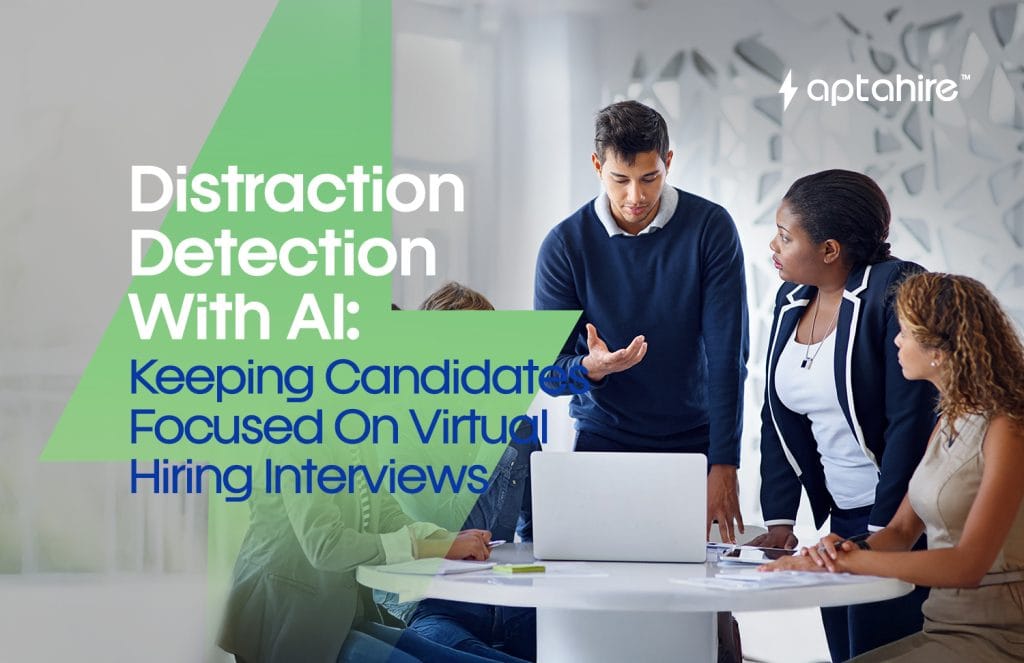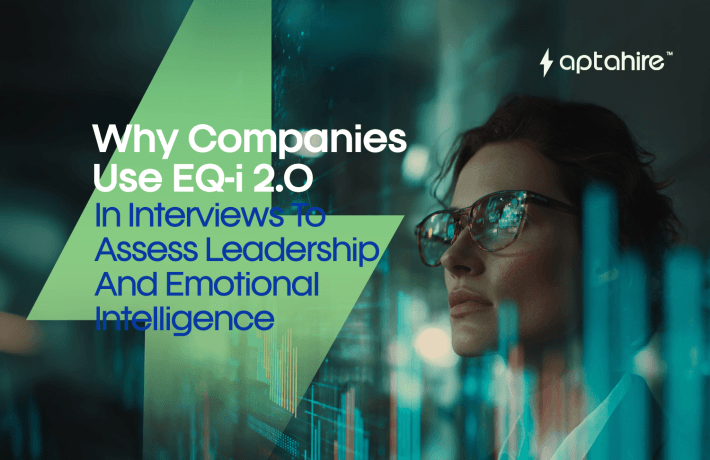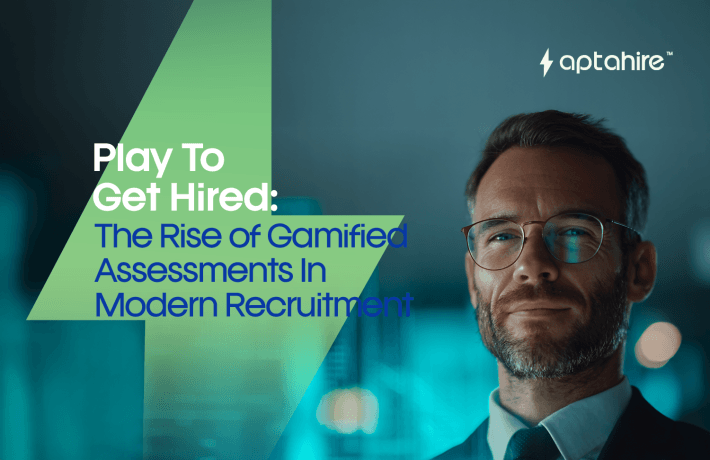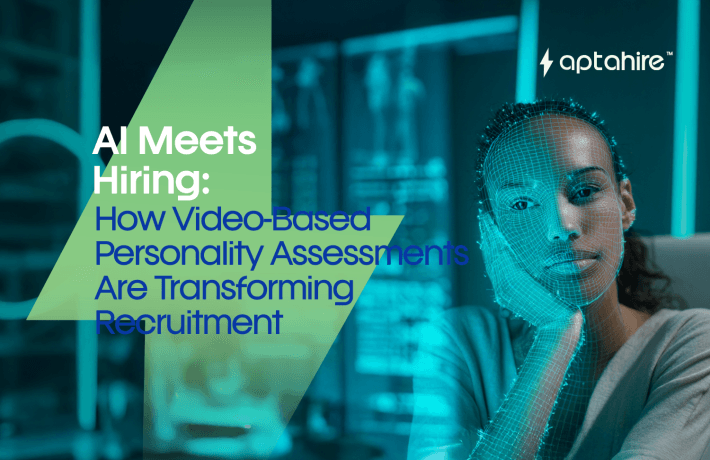Distraction Detection with AI: Keeping Candidates Focused on Virtual Hiring Interviews

Introduction
Let’s be honest, virtual interviews can be awkward.
One moment you’re answering a question about leadership skills, and the next you’re distracted by a dog barking, a doorbell ringing, or a notification lighting up your screen. Multiply that by 20 interviews a week, and you begin to see the bigger challenge.
How do you ensure candidates are truly present during virtual interviews?
Welcome to the world of AI-powered distraction detection, a digital game-changer that’s quietly reshaping how companies hire talent in a remote-first world.
Let’s break it all down, from what it does, to how it works, and why it’s becoming the unsung hero of modern recruitment.
The Big Problem: Distractions in a Virtual World
Before 2020, most interviews happened face-to-face. Recruiters could read the room, make eye contact, sense energy, and spot if something was “off.” Today, interviews often happen from a living room, a shared workspace, or even a car.
And while remote hiring is convenient and cost-effective, it brings a new set of challenges:
- Is the candidate actually paying attention?
- Are they multitasking or looking up answers?
- Is someone coaching them off-screen?
- Are environmental distractions affecting their performance?
These questions aren’t about paranoia, they’re about fairness, consistency, and making the right hiring decisions.
Why Focus Matters More Than Ever
Imagine you’re interviewing for a data analyst role. You’re looking for someone with critical thinking skills and attention to detail.
Now picture this:
- Candidate A answers quickly but keeps glancing sideways.
- Candidate B pauses often, looks off-screen, then replies.
- Candidate C stays locked in, engaged, and focused.
Who gives the best impression?
Candidate C, right?
Now, what if Candidate B was actually the most qualified, but got distracted by a noisy neighbor or an unstable internet connection?
This is where AI steps in, not to replace the recruiter, but to provide context, consistency, and clarity.
What is AI-Powered Distraction Detection?
In simple terms, distraction detection uses artificial intelligence to monitor a candidate’s behavior during a virtual interview.
It watches for non-verbal cues and environmental factors that suggest the candidate may be distracted, disengaged, or receiving external help.
Here’s what AI can track:
- Eye Movement – Is the candidate looking at the screen or glancing away frequently?
- Facial Engagement – Do they seem alert, or is their face expressionless or drowsy?
- Head Posture – Are they facing forward, or constantly turning to the side?
- Audio Interruptions – Is there background chatter, whispers, or other people speaking?
- Tab Activity – Are they switching screens or multitasking during the interview?
- Screen Inactivity – Are there long periods of silence or frozen screens?
These signals are subtle, but together they paint a picture of how focused and present a candidate truly is.
Types of Distractions AI Can Detect
Let’s go a layer deeper. Distractions can be categorized into three buckets:
1. Environmental Distractions
These are external disruptions like:
- People walking into the room
- Phones ringing
- Pets making noise
- Poor lighting or camera positioning
2. Behavioral Distractions
These are actions that indicate the mind is elsewhere:
- Constant eye darting
- Fidgeting or nervous gestures
- Typing while answering
- Frequently checking another screen
3. Integrity Red Flags
These are more serious and suggest potential cheating or assistance:
- Whispering or lip-syncing
- Long unnatural pauses before answering
- Repetitive eye movement suggesting reading off a script
- Echoed answers or two voices in the background
AI tracks all of these. Not to catch someone in the act, but to provide the recruiter with insights, so decisions are rooted in reality, not guesswork.
A Recruiter’s Secret Weapon: Insight, Not Instinct
One of the toughest parts of recruitment is bias. Even unconsciously, we’re all influenced by:
- How someone looks or speaks
- Their environment or background
- How “confident” they seem
AI cuts through that noise. It doesn’t care about accents, décor, or charisma. It evaluates behavioral signals with clinical precision. That means you’re less likely to overlook a great candidate just because they seemed “a bit off.”
Even better? After each interview, recruiters get a distraction report, highlighting:
- Overall engagement score
- Timeline of flagged distractions
- Breakdown of behavior patterns
Now, you’ve got data to back up your instincts.
Real-Life Use Case: How It Actually Works
Let’s say you’re using an AI interview tool like Aptahire.
Here’s how a typical interview might unfold:
- Pre-interview Prompt
Candidates are informed that AI will monitor engagement and distractions. This builds transparency and sets expectations.
- Live Monitoring Begins
As the interview starts, the AI silently watches eye movement, facial engagement, tab switches, and background activity.
- Distraction Flagged
At minute 7, the candidate’s eyes shift frequently. At minute 8, there’s a faint whisper detected. The AI increases the distraction score.
- Gentle Reminder
A non-intrusive prompt appears: “We’ve detected signs of distraction. Please ensure you’re focused and in a quiet environment.”
- Post-Interview Analysis
Once done, the recruiter sees the distraction log, engagement heatmap, and overall focus rating, alongside the candidate’s answers.
- Decision Time
The recruiter considers both the performance and context, resulting in a fairer, more informed hiring decision.
Why It’s a Win-Win for Recruiters and Candidates
For Recruiters
- No more guesswork
- Fewer reruns or re-interviews
- More reliable hiring outcomes
- Time saved on initial screening
- Reduced chance of hiring the wrong fit
For Candidates
- Clear expectations upfront
- An equal playing field, no matter your background
- Opportunity to stay focused and be your best self
- Protection against others who may try to cheat
- Faster results and fairer evaluations
When implemented well, distraction detection actually empowers candidates to bring their A-game.
But… What About Privacy Concerns?
That’s a fair question, and a very important one.
The idea of AI “watching” you during an interview might sound creepy. But in reality, modern platforms are built with privacy-first architecture.
Here’s how responsible AI systems handle it:
- Consent-first model – Candidates are informed and must agree before the interview starts.
- No invasive surveillance – The AI only monitors what’s on screen during the session.
- Encrypted data – All recordings and behavioral data are securely stored.
- Data retention limits – Files are deleted after a fixed period.
- No bias – AI is trained to ignore race, gender, age, and other irrelevant factors.
In short, ethical AI keeps both sides safe, ensuring fairness without crossing the line.
The Future of AI in Hiring: Beyond Distraction Detection
Distraction detection is just one layer of what AI can do in virtual hiring. Here’s what’s coming next:
- Emotion analysis – AI can detect nervousness, enthusiasm, or confidence.
- Tone and language pattern recognition – AI can analyze communication style and clarity.
- Predictive success modeling – AI can match engagement levels with job performance over time.
- Real-time coaching – AI may soon prompt candidates mid-interview with suggestions to improve delivery.
Imagine an interview tool that’s not just evaluative, but also transformative.
That’s where we’re headed.
How to Prepare Candidates for AI-Monitored Interviews
If you’re a recruiter or HR leader, consider building a simple checklist for candidates. Something like:
Candidate Readiness Checklist
- Choose a quiet, well-lit space
- Use headphones for clearer audio
- Ensure stable internet connection
- Keep your face and eyes visible
- Avoid multitasking during the session
- Let others at home know you’re in an interview
- Stay calm — AI is here to help, not hurt
This puts everyone on the same page. No surprises, just solid prep.
Final Thoughts: A Fairer, Focused Hiring Experience
We’re living in a world where remote work, remote teams, and remote hiring are not temporary, they’re the new standard.
And with that shift comes a responsibility to ensure hiring remains honest, unbiased, and performance-driven.
AI-powered distraction detection isn’t about catching people out, it’s about giving everyone a fair chance to focus and succeed. It levels the playing field, supports better hiring decisions, and promotes transparency for all.
So the next time you enter a virtual interview, whether as a candidate or a recruiter, remember:
It’s not just about answering questions. It’s about showing up, staying focused, and bringing your full self to the screen.
And thanks to AI, we can now see that with greater clarity than ever before.
FAQs
1. What is AI-powered distraction detection in virtual interviews?
AI-powered distraction detection is a feature in some video interview platforms that uses artificial intelligence to monitor candidate focus and engagement. It tracks behavioral signals like eye movement, facial orientation, background noise, and tab activity to identify signs of distraction or external assistance during virtual interviews.
2. How does the AI know if a candidate is distracted?
The AI uses computer vision and audio analysis to observe non-verbal cues such as frequent glancing away, looking off-screen, long pauses, whispering, background voices, or switching tabs. It then flags these as potential distractions and provides an engagement or distraction score to the recruiter.
3. Is distraction detection AI intrusive or a breach of privacy?
No. Ethical AI systems prioritize privacy and transparency. Candidates are informed in advance, consent is required, and all monitoring is limited to the interview session only. Data is securely encrypted and stored for a limited time, with no personal bias or invasive surveillance involved.
4. Can AI detect if a candidate is being coached during the interview?
Yes, to a certain extent. The AI can flag suspicious behaviors like whispering, lip-syncing, unusual delays in responses, and multiple voices in the background, all of which may suggest real-time assistance or coaching during the interview.
5. How does distraction detection benefit the hiring process?
It ensures fairness by providing recruiters with a clearer picture of a candidate’s true engagement. It minimizes the risk of hiring based on inaccurate impressions caused by distractions, and helps prevent cheating or multitasking, making the process more reliable and data-driven.
6. Will candidates be penalized for being distracted during the interview?
Not necessarily. AI doesn’t make hiring decisions, it provides context. Recruiters use distraction data alongside candidate responses to make more informed choices. If a distraction is minor or environmental (like a doorbell), it won’t automatically disqualify someone but may be taken into account if patterns persist.



